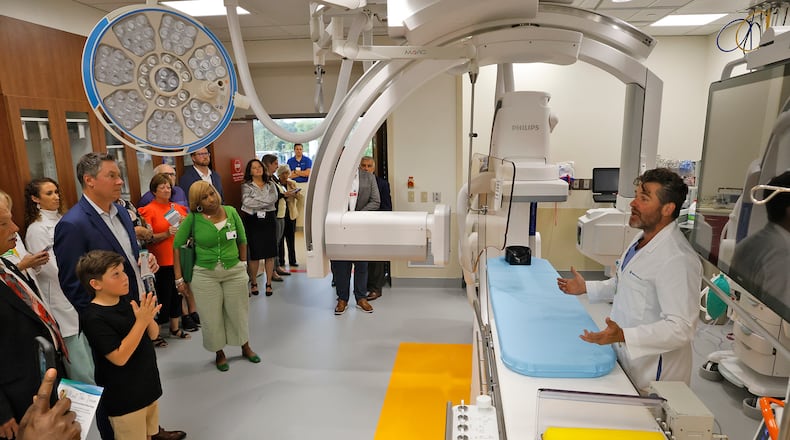While more Ohioans have a higher level of financial protection against health care costs than people in most other states ― about 94% of Ohioans had health insurance in 2023, compared to 88% in 2010, according to the Health Policy Institute of Ohio ― some say it’s still not enough.
“The cost of health care services and health insurance premiums, deductibles and copays keeps rising, making it difficult for people make ends meet and access care when they need it,” said Amy Rohling McGee, president of the Health Policy Institute of Ohio.
People should pay attention to policy changes, such as looking to other states to see how they lowered health care costs, she said.
There are a number of unknowns about what’s to come in health care under President-elect Donald Trump’s administration, as well as with new leaders in Congress, but what is known is the American Rescue Plan Act’s premium tax credit enhancements are set to expire this year.
Credit: NYT
Credit: NYT
ARPA’s premium tax credits enacted in 2021 and extended by the Inflation Reduction Act through 2025 increased subsidies for plans on the Affordable Care Act Marketplace and increased access to those subsidized plans to middle class families.
If they do expire, an estimated four million Americans could become uninsured, according to the Urban Institute, a social and economic policy think tank.
Increased focus on technology
Health care experts see advances in technology spurred by the COVID-19 pandemic continuing into the future.
“Technology, we saw it help throughout the COVID pandemic and that some services were still able to be maintained through telehealth services through digital services,” said Scott Nelson, managing principal of SpringParker, a consulting firm based out of Springfield focused on health care needs.
A lot of organizations are continuing those or are looking to either start new services with telehealth, expand those offerings and/or take on additional telehealth and digital health services, he said.
Artificial intelligence may be another source to fill in gaps in service and help take the load off health care workers.
Credit: Nick Graham
Credit: Nick Graham
“Artificial intelligence organizations ... are trying to supplement it in to take some of the stress, to take some of the workload ― the over-workload ― off of individuals’ plates and help them do some of their day-to-day tasks in an easier, more efficient environment,” Nelson said.
The Ohio Hospital Association said investments in technology and artificial intelligence will also be a focus area in the new year for health care to enhance patient care experience and improve operational services.
Leveraging partnerships
Hospitals are facing increased costs, the Ohio Hospital Association said, citing significant inflation, increased labor costs and greater supply chain and pharmaceutical expenses.
“Despite these intense economic conditions, hospitals are committed to providing the best quality care to patients and supporting community wellness,” the Ohio Hospital Association said in an organizational statement.
Workforce continues to be a priority, and hospitals are looking at ways to reimagine care delivery models, along with establishing new career pipelines with educational partners to grow clinical workforce, the association said.
More health care organizations are turning to consolidation and partnerships in order to boost resources while cutting down on costs. Health systems could consolidate within a singular organization or by merging two or more groups.
Health care organizations have also used partnerships to leverage resources and meet other needs in recent years. This time last year, Dayton Children’s added 11 physicians and four nurse practitioners to the Dayton Children’s medical team after partnering with Pediatric Associates of Dayton.
A few months prior to that, Dayton Children’s partnered with PriMED Physicians group to improve the continuity of care for their patients through each entity by sharing technology and digital resources, like medical records.
Premier Health also partnered with Wright State, continuing and enhancing its affiliation agreement to establish an academic medical center in the Dayton region.
Mental health
Mental health continues to be an area of health care in need of more doctors and mental health providers, making it a sector ripe for expansion.
“Regionally and nationally, there are mental and behavioral health service gaps,” Nelson said.
There are opportunities for both health care organizations and other entities to collaborate on how to fill those gaps, such with telehealth and AI.
“There are a lot of groups that are currently inside health care, but then also collaborators that are outside of health care, that are making significant investments into mental and behavioral health services,” Nelson said.
About the Author


